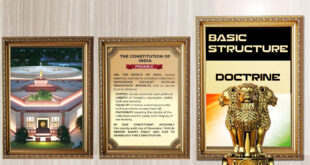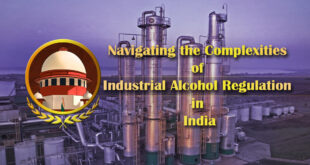- The border town of Belagavi has been a part of Karnataka since boundaries were demarcated along linguistic lines under theStatesReorganisationAct, 1956.
- But theinter-State border dispute between Karnataka and Maharashtra erupts every now and then.The decades-old dispute flared up again in 2022when Karnataka Chief Minister BasavarajBommaisaid the Karnataka government was considering laying claim to Jath taluk in Maharashtra,evoking a strong response.
- The Karnataka Legislative Assembly, on December 22, unanimously passed a resolutionto protect its interests andcalled the dispute a “closed chapter”.On December 27, the Maharashtra government retaliated by passing aunanimous resolution in itsAssemblyto legally pursue the inclusion of 865 Marathi-speaking villages from Belagavi, Karwar,Nipani, Bidar,Bhalkiand others in Karnataka into the State.
What are the claims of the two States?
- The raging boundary dispute between the two States dates back to thereorganisationof States along linguistic lines.
- In 1957, unhappy with the demarcation of boundaries, Maharashtra demanded realignment of its border with Karnataka.
- It invoked Section 21 (2)(b) of the Act, submitting a memorandum to the Union Ministry of Home Affairs stating its objection to Marathi-speaking areas being included in Karnataka. It filed a petition in the Supreme Court staking a claim over Belagavi.
- Karnataka has argued that the inclusion of Belagavi as part of its territory is beyond dispute.
- It has cited the demarcation done on linguistic lines as per the Act and the 1967 Mahajan Commission Report to substantiate its position.
- Karnataka has argued for the inclusion of areas in Kolhapur, Sholapur andSanglidistricts (falling under Maharashtra) in its territory.
- From 2006, Karnataka started holding the winter session of the Legislature in Belagavi, buildingthemassiveSuvarna VidhanaSoudhain the district headquartersto reassert its claim.
What has been the politics around the dispute?
- In the immediate decades of the formation of States, no national party was willing to take the risk and address the dispute, especially the Congress which has a social base in both States.
- This helped MaharashtraEkikaranaSamiti (MES) sustain its fight with a single agenda — Belagavi’s inclusion intoMaharashtra.
- The MES-supported candidates, who have been winning one or more seats in the district since the 1957 Karnataka Assembly elections, were defeated in the 2018 Assembly elections. As another election draws close in 2023, the MES is keen to revive its political fortunes.
- The dispute strongly resonates in the cultural arena too. For instance, two SahityaSammelanas— the 73rd AkhilBharatiyaMarathi Sahitya Sammelana (ABMSS) and the 70th AkilBharatiyaKannada Sahitya Sammelana — were held in Belagavi in 2000 and 2003, respectively. Both events prepared the ground for the re-opening of an otherwise muted issue.
What were the terms of the Mahajan Commission?
- In 1966, at Maharashtra’s insistence, the then Prime Minister Indira Gandhi established a one-man commissionled by Mehr Chand Mahajan,whichrecommended that 264 villages be transferred to Maharashtra and that Belagavi (Belgaum) and 247 villages remain with Karnataka.
- Maharashtra rejected the report, while Karnataka welcomed it. Karnataka argued that either the Mahajan Commission Report should be accepted fully, or the status quo maintained.
SOURCE: THE HINDU, THE ECONOMIC TIMES, PIB
 Chinmaya IAS Academy – Current Affairs Chinmaya IAS Academy – Current Affairs
Chinmaya IAS Academy – Current Affairs Chinmaya IAS Academy – Current Affairs


